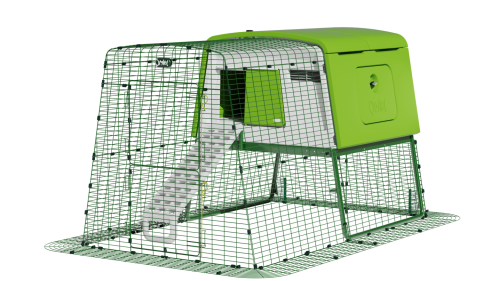The Depluming mite is a related to the scaly leg mite. It is a burrowing mite that burrows in the skin by the shaft of the feather. The mite causes irritation to the skin and feeds off the fluids that are released as a result of the irritation. As a result the chicken will pluck her own feathers out and will look a bit worse for wear and tatty. Unlike with a lot of other parasites, the depluming mite doesn’t always affect all of your chickens. You may just have one chicken who will suffer. This isn’t to say it can’t affect your whole flock however. The mite carries out its entire lifecycle on the bird over 17 days. Rather than laying eggs like most other parasites, the depluming mite gives birth to live young.

A happy free roam chicken with a healthy set of ginger feathers
Signs And Symptoms
- Plucking their own feathers out
- Overpreening
- Broken feathers
- Loss of feathers
- Thick, crusty skin at the bottom of the feathers
- Drop in egg production
- Weight loss
Treatment
The depluming mite is notorious for being tricky to treat as it burrows fairly deep into the skin where the mite powders struggle to reach. There are several different methods and there are many differing opinions on the best way to treat depluming mite. Using flowers of sulphur baths is one method that some poultry owners choose. You can buy this at most pet stores and it will kill any parasite that is living on your chicken including the depluming mite. This is a natural mineral that isn’t harmful to your chicken, other pets or garden. Another treatment some poultry keepers use is Ivermectin. This is sometimes prescribed by vets however Ivermectin isn’t licensed for poultry, so if you do choose to use this you should contact your vet for advice on how to use it. If you suspect your chickens do have depluming mite it is best to get advice from your vet on how to get rid of the problem.






Comments
Eileen, 6 May 2021
We have 3 chickens and one of them, who stopped laying about a year ago has become very fat. She is still eating and drinking well but has now become pigeon toes when she walks because of her size. She still seems happy and her combe is still red. Any ideas please.